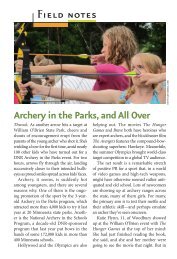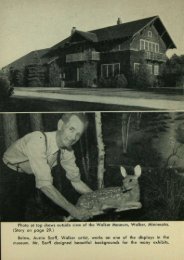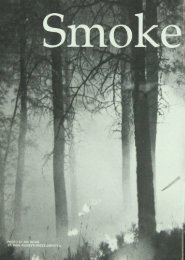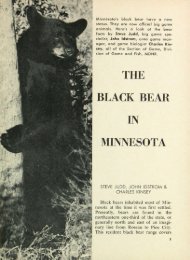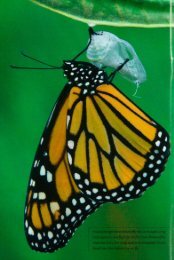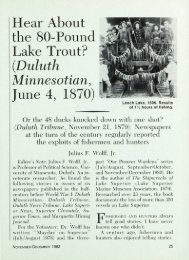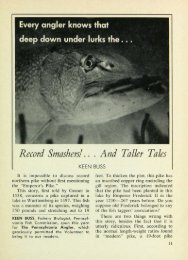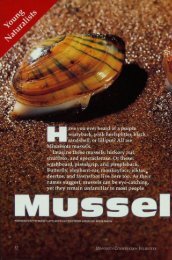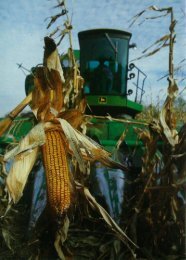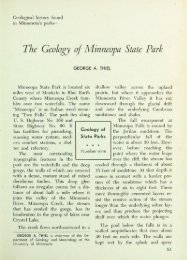1836 What Were Learning About Black Bears in - webapps8
1836 What Were Learning About Black Bears in - webapps8
1836 What Were Learning About Black Bears in - webapps8
- No tags were found...
Create successful ePaper yourself
Turn your PDF publications into a flip-book with our unique Google optimized e-Paper software.
<strong>What</strong> We're <strong>Learn<strong>in</strong>g</strong><strong>About</strong> <strong>Black</strong> <strong>Bears</strong><strong>in</strong> M<strong>in</strong>nesota<strong>Bears</strong> <strong>in</strong> north-central M<strong>in</strong>nesota producemore robust cubs than those <strong>in</strong> northeasternM<strong>in</strong>nesota. Why is this so? Two DNR wildlifebiologists report on black bears they havestudied over the past three yearsKaren Noyce and Dave GarshelisPICKING OUR way through w<strong>in</strong>terbrittlealder and squeak<strong>in</strong>gsnow, we approached the den with acerta<strong>in</strong> anticipation. Twenty feetfrom the mound of dirt mark<strong>in</strong>g theden entrance, we stopped. Last yearthis bear, female #400. was alert <strong>in</strong>her den, mak<strong>in</strong>g it difficult to getclose enough to adm<strong>in</strong>ister the immobiliz<strong>in</strong>gdrug. But last year shehad year-old cubs. This Decembershe should be pregnant with a newlitter. Based on previous experiencewith pregnant females, we expectedher to be soundly asleep.We were still 10 feet away whenwe heard the telltale pop-pop of herjaws and the heavy breath<strong>in</strong>g characteristicof a not-too-pleased bear.There she was, head up, star<strong>in</strong>g usstraight <strong>in</strong> the eye, and look<strong>in</strong>g notthe least bit groggy from her eightweeks of rest. So much for ourtheory about pregnant females.It has taken three w<strong>in</strong>ters ol visit<strong>in</strong>gbear dens to learn a simple lesson:Some bears sleep soundly,whereas others are more wary <strong>in</strong>their dens, regardless of sex, age, orreproductive status. It will requiremany more years to answer importantquestions: How many cubs areborn each w<strong>in</strong>ter? How many surviveto adulthood? <strong>What</strong> factors <strong>in</strong>fluencerates of reproduction andAbove: In spotter plane, observer Karen Noyce locates radio-collared bearsby telemetry. Directional antenna is on w<strong>in</strong>g strut at right. Left: Branchholds jaw of drug-immobilized bear open. (Color photo by Tim Smalley, DNR.)37





